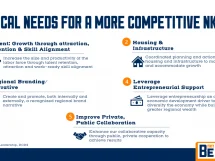
By Uric Dufrene
Sanders Chair in Business
Indiana University Southeast
Today’s gross domestic product report confirms what labor market data have been showing the past several weeks. The report showed that growth slowed to 2.2 percent for the first quarter, down from the fourth quarter reading of 3 percent. The 2.2 percent rate was also under consensus estimates. Despite the overall lower number, there was a bright spot in consumer spending. Personal consumption spending grew at 2.9 percent, the fastest since the fourth quarter of 2010. While the headline number was relatively weak, the consumer spending number is some justification for reserved optimism.
One of the keys to overall growth this year is domestic demand, primarily through consumer spending. While the overall report is somewhat of a bummer, there is a bright spot with consumer spending.

The report on gross domestic product provides some useful information on the economy, but the report is backward looking. When we observe more current data, the news is not getting any better.
One of the concerns is new claims for unemployment. After almost approaching the 350,000 level, claims have been on the rebound again. Thursday, the Labor Department reported that claims came in at 388,000, again above the consensus estimate of 375,000. A stronger recover should be seeing the opposite.
Rising claims were early clues in last year’s slowdown, and may be indicating another slowing for 2012. As the chart below shows, rising claims are generally associated with falling non-farm payrolls. The transmission mechanism that is of concern is through consumer confidence. Falling payroll numbers will adversely impact consumer confidence, thus dampening the crucial consumer spending that is necessary to sustain any recovery.

The caution light data do not stop with rising unemployment claims. This week, durable goods orders plummeted. The actual number came in much softer than consensus, and it was the weakest report since January 2009. This is another report that can be quite volatile from month to month. So, it is too early to tell if this is the start of a trend. When you combine this report with other indicators, it suggests that we may be entering another cooling period. As we have shown in previous updates, there is a close relationship between the national durable goods number and Louisville Metro non-farm payrolls. If we continue to see continued weakness in the durable goods number, this will show up subsequently in weaker growth for both Indiana and Kentucky, including Louisville Metro.

Another early clue in last year’s call for the national economic slowdown came through some of the regional Federal Reserve regional surveys. Specifically, the Philadelphia Fed survey was showing significant declines in the first quarter, and the Empire Manufacturing surveys showed declines in the second quarter. These reports are beginning to flash caution once again. The latest reports came in under consensus, and showed declines from previous months.
My 2012 outlook for Louisville Metro was that growth would exceed expectations. So I have certainly been favorable regarding the overall outlook. The next report on Louisville Metro non-farm payrolls will show one of the largest year- over- year gains in non- farm payrolls since the late 90s. The report will also show the metro region adding almost 6,000 jobs in one month, placing the metro region only 10,000 jobs under the previous peak. The favorable outlook has not changed yet, but the current data are suggesting that we may be seeing another slowdown in the overall economy, subsequently impacting job growth in both Indiana and Kentucky. A few more data points will be necessary, but the caution light is flashing longer than usual.




















Add Comment